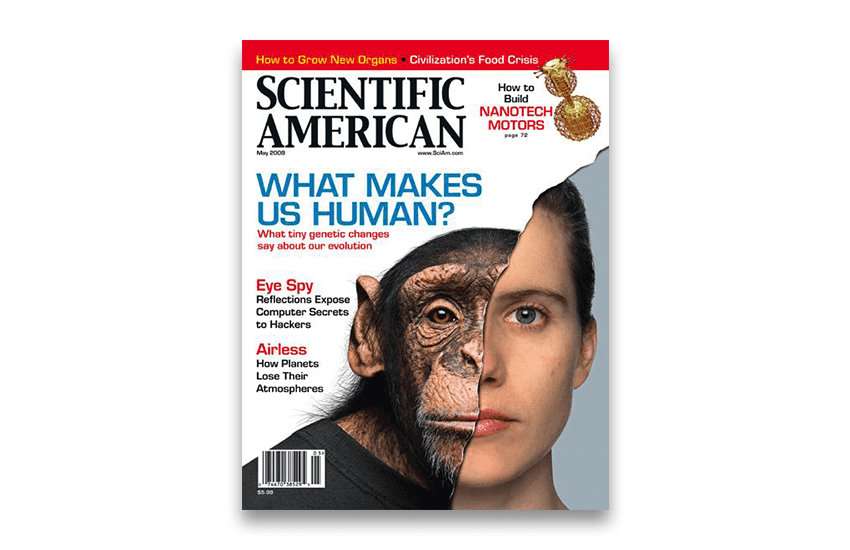By Richard Hughey, Computer Engineering, UCSC
Dr. Katherine Pollard, postdoctoral alumna of the Center for Biomolecular Science and Engineering and the UCSC genome browser, wrote the May cover story of Scientific American, “What Makes Us Human?.” The article is based on her research with professor of biomolecular engineering David Haussler, director of the center and an HHMI investigator, and others at UCSC and elsewhere.
The article discusses one of the most intriguing recent studies in comparative genomics, the sequencing of the chimpanzee genome and joint analysis with the human genome. Katherine describes her excitement at discovering in 2004 the HAR1 gene, a distinctive difference between the two genomes. Following this discovery, CBSE researchers posited and confirmed that the sequence coded not a protein but instead an RNA. A European collaborator found that HAR1 works to ensure the proper structuring of neurons in the cerebral cortex, establishing the hypothesis that the new HAR1 gene helped make humans human.
Now an Associate Professor of Biostatistics and Sloan Research Fellow at the University of California San Francisco, Katherine worked at UCSC with professors David Haussler, Todd Lowe, and Manuel Ares, as well as researchers and students within their laboratories, from 2003 to 2005. In her UCSF lab, she is continuing her genomic, genetic, and statistical research with a focus on human and non-human primates and on metagenomic microbial communities.
The research described in the Scientific American article received widespread media coverage at the time it was published in 2006. See the press release for details and a full list of collaborators.
